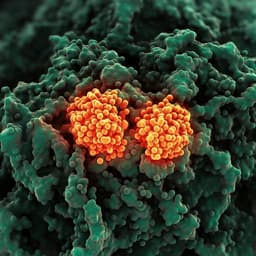
Medicine and Health
Effects of potent neutralizing antibodies from convalescent plasma in patients hospitalized for severe SARS-CoV-2 infection
A. Gharbaran, C. C. E. Jordans, et al.
In a randomized clinical trial of 86 hospitalized COVID-19 patients, treatment with convalescent plasma showed no overall clinical benefit despite its safety. The study, conducted by a team of researchers including Arvind Gharbaran and Carlijn C. E. Jordans, highlights that most patients had strong neutralizing antibodies at admission, prompting a shift in focus for future studies towards earlier disease stages.
~3 min • Beginner • English
Related Publications
Explore these studies to deepen your understanding of the subject.







